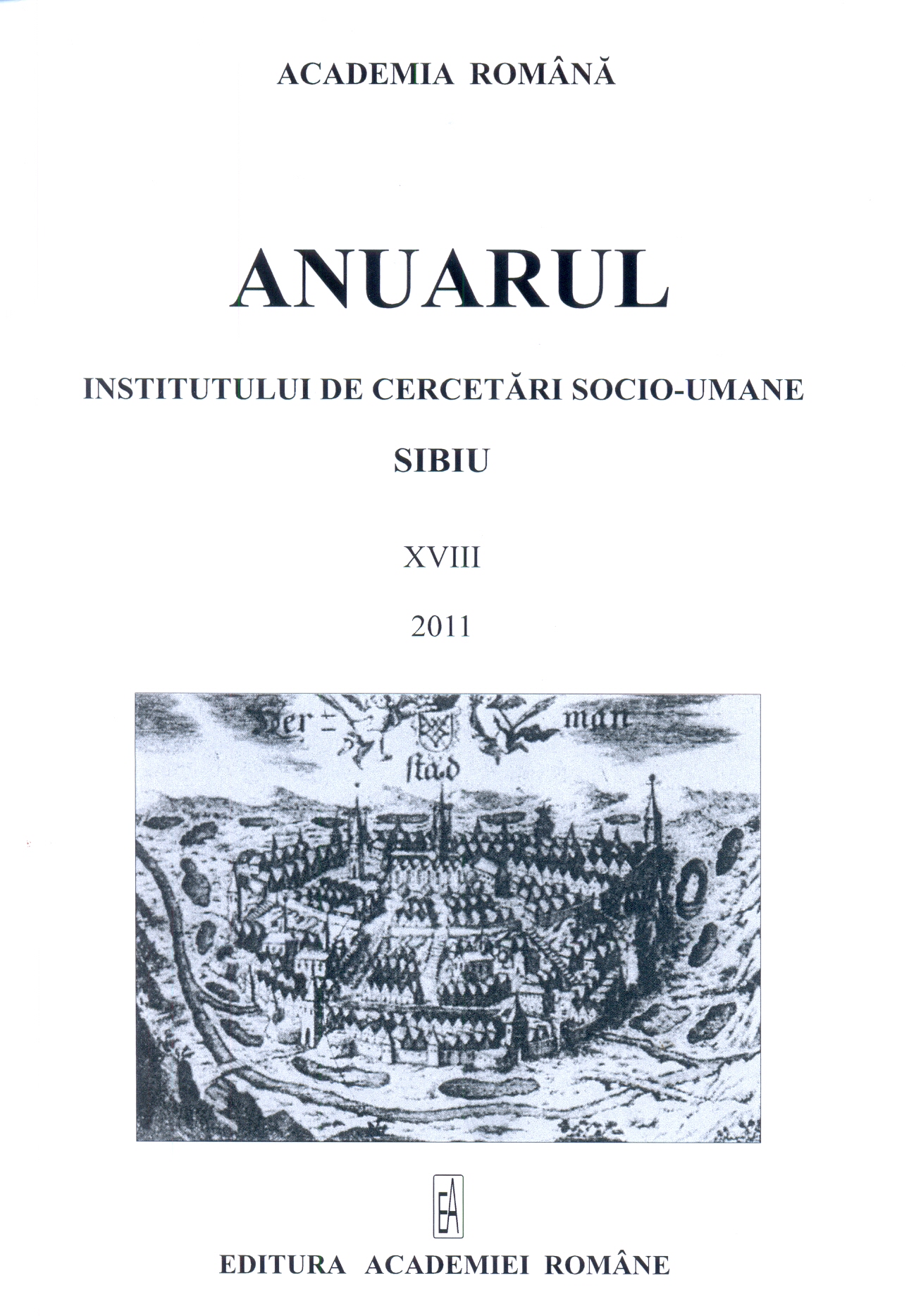ARME ŞI ECHIPAMENT MILITAR DESCOPERITE ÎN TERITORIUL DE COLONIZARE GERMANĂ DIN SUDUL TRANSILVANIEI (SEC. XII–XIII). CÂTEVA ASPECTE ŞI PUNCTE DE VEDERE
WEAPONS AND MILITARY EQUIPMENT FOUND ON THE GERMAN SETTLEMENT AREA FROM SOUTHERN TRANSYLVANIA (THE 12th–13th CENTURIES). SOME ASPECTS AND PERSPECTIVES
Author(s): Maria Crîngaci ŢiplicSubject(s): Archaeology, Local History / Microhistory, Military history, 6th to 12th Centuries, 13th to 14th Centuries
Published by: Editura Academiei Române
Keywords: sword; tripod vessel; mace; German Hospites; Transylvania; blacksmith’s workshop from Schellenberg; the end of the 12th Century; the 13th Century;
Summary/Abstract: The idea of “cultural homogeneity” has been generally accepted starting with the 12th century, a fact that has led to the archaeological material losing its ethnic features. However, one can still observe certain ethnic indicators in the German colonization area, but only for a short period, namely from the mid-12th century until the mid-13th century. This ethnic separation is visible from the perspective of material culture (the material culture contrasts being due especially to technological and cultural infusions brought by the guests/hospites from Western Europe, which they later spread, once installed in Transylvania), as well as from the political one, from the military potential and the administrative and ecclesiastical organization. These communities of Western guests (Flanders, Walloons, Saxons, and Flemish) finally succeeded to establish themselves as an identity group (Saxones – Transylvanian Saxons – Siebenbürger Sachsen). The most revealing elements of material culture of the 13th century preserved until today presenting an ethnic character, even an emblematic style, are the objects made by Western colonists. In this respect, the defining ones include liturgical objects, swords, the bronze tripod vessel, certain tools and, to a certain point, ceramics. From an archaeological perspective, another proof that validates the work of the foundry workshops in Transylvania in the 13th century, was the discovery of a pit-deposit in 1964 at Bratei, containing six iron objects, including a plough knife marked with a sign, possibly representing the trademark of the forging workshop; as well as the discovery of numerous iron objects at Şelimbăr in 1879 (56 objects), the toolkit of a blacksmith’s workshop, dated the first half of the 13th century, including an urceolus (aquamanila), a sword and sword fragments. Most important are the sword and the aquamanila, clearly attesting the fact that they had been in full manufacturing process when the workshop was closed down, most likely due to the Mongol invasion in 1241–1242.
Journal: Anuarul Institutului de Cercetări Socio-Umane Sibiu
- Issue Year: XVIII/2011
- Issue No: 18
- Page Range: 23-56
- Page Count: 34
- Language: Romanian
- Content File-PDF

